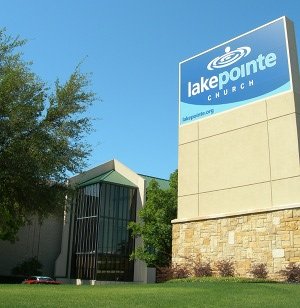Proponents of the multicampus church option cite flexibility, stewardship and the “spark” that newness can bring to ministry.
“You get the big-church bang … but you also get the pop and sizzle of a new church,” said Rodney Harrison, vice president for institutional effectiveness at Midwestern Baptist Theological Seminary and co-author of Sponsoring Starbucks Churches in a Folgers World.

|
Stewardship is a key element of the model’s draw. “It allows a church to plant a presence without having to replicate resources,” Harrison said.
A multisite church shares resources—financial, management and personnel. “We are networked for stewardship of resources, not only for money, curriculum and other resources, but also for ideas and best practices,” explained Stephen Boster, campus pastor for a site Pleasant Valley Baptist Church in Liberty, Mo., started near Kansas City International Airport.
The model seems to save money, particularly in urban areas where retail or commercial space is more readily available to rent or lease, noted Glenn Akins, assistant executive director for the Baptist General Association of Virginia and a multicampus expert.
“We advocate a low-cost, low-risk model as much as possible,” he added. “Buying land (and] building buildings, especially in urban areas, is getting to be cost prohibitive and increasingly difficult because of regulations (and) restrictions imposed.”
Sites often share a senior pastor by video link, Skype or CD. Some churches use site pastors for hands-on ministry to site members. Campuses may have their own worship teams or also share music with the main campus. The church and its sites share other personnel for education, counseling or other services.
“A church can have a new work with an on-site pastor, but can use other specialists which are available to all. They don’t have to pay additional staff,” Harrison said.
He added that insurance for a new site can be cheaper as a rider to the main campus’ policy, bylaws and church policies are in place and the sites can share special events.
The multisite model can allow a church to minister to a targeted group in several locations. “Some churches have figured out that they can reach a certain people group well and that they can reach those in other sections,” Akins said. The new site “is a replica but that is contextualized in that area.”
Harrison believes the model allows “so much flexibility” for ministry. He noted a church in Holden, Mo., that met in several sites until it could complete a building to accommodate its growth. “It was an interim strategy,” he said.
A church also can use the model to reach underserved areas. “Many small towns in Missouri don’t have an evangelical presence or a church presence at all,” he said.
Harrison pointed to the church in Jerusalem that met house to house. “That’s the theological mooring that the multisite model is embracing. “We don’t want to go beyond the New Testament church,” he said. “If you understand (multisite) as a church, is it much different than a church with multiple services?”
Congregations interested in using the model need “to do their homework, visit those that are working and learn about those that fail,” he said.
Churches also need to address some issues in advance, Akins said. Leaders must determine the essential core and non-negotiables in the church’s function.
How should the church customize and how will it function as a multiple unit? Leaders must determine how it will measure “success” and how it will handle possible power and control issues.
Paul Atkinson, Baptist General Convention of Texas director of church planting, believes leaders also must be prepared to answer the question: What happens if a site determines it wants to be autonomous?


